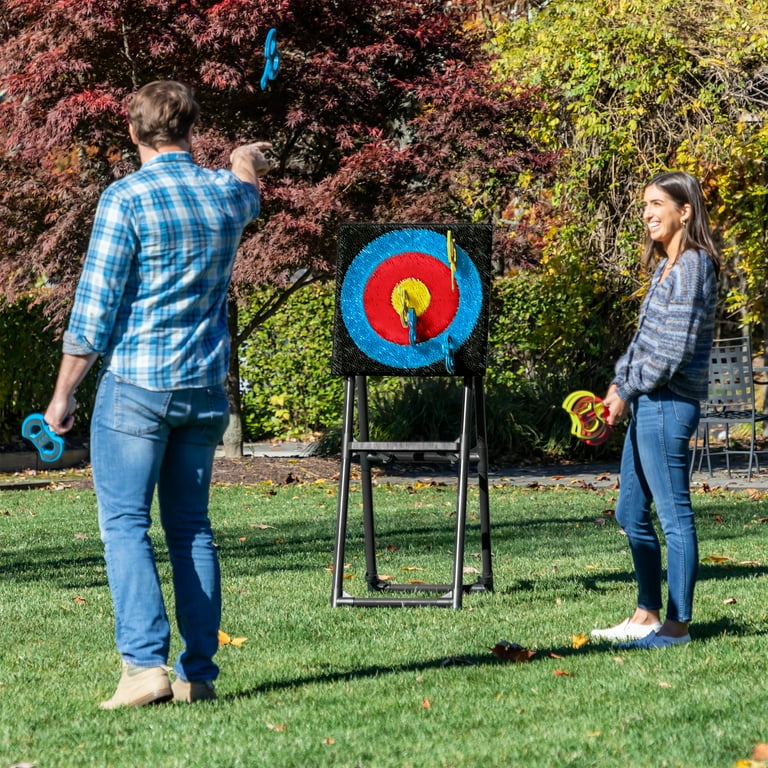Study the Axe Throwing Denver Scene: What You Required to Know
The Enjoyable of Axe Throwing: Exactly How This Sporting Activity Combines Ability and Adrenaline for a Good Time
Axe throwing has actually arised as a captivating sporting activity that masterfully links the requirement for exact ability with the thrill of adrenaline, offering participants a unique and appealing experience. The act of tossing an axe in the direction of a target demands concentration and method, simultaneously fostering an atmosphere of camaraderie and pleasant competition.
The Origins of Axe Throwing
Axe throwing, a leisure activity that has gained considerable popularity recently, traces its origins back to ancient times. This primitive sporting activity days back to early human history, when axes were mostly made use of as tools and tools. The earliest records of axe use in competitive contexts are found amongst the Celts and Vikings, that tossed axes for sport in addition to in combat training. The practice was not simply a leisure activity yet an important ability for survival and warfare.
Medieval European warriors, especially during the Center Ages, practiced axe throwing as part of their martial training. The Francisca, a kind of throwing axe used by the Franks, became legendary for its deadly precision. This traditional weapon was developed to be thrown at opponent guards and shield, showcasing its dual energy in both sporting activity and battle.
In even more recent background, axe throwing saw a rebirth in the logging camps of The United States and copyright in the 19th and 20th centuries. Lumberjacks would certainly take part in friendly competitors, testing their accuracy and strength by focusing on wood targets. This evolution from a survival skill to an entertainment task has paved the way for its contemporary revival, with committed venues and organizations currently commemorating the sporting activity internationally.
Devices You Need
Comprehending the rich history of axe tossing improves the admiration of the sport's modern-day iteration. For leisure and competitive axe throwing, the most frequently utilized type is the hatchet, usually evaluating between 1.25 to 2 extra pounds with a take care of size of about 16 inches.
Similarly essential is the target. Law targets are built from wood, with softwood ranges like want or cottonwood being liked for their capacity to absorb and hold the axe. The target is generally divided right into 5 concentric circles, each with a particular point value, to promote scoring.
Safety gear, though frequently forgotten, is essential. Safety handwear covers can improve grip and stop sores, while closed-toed footwear are a must to shield feet from gone down axes (denver axe throwing). A well-lit, roomy tossing area, total with safety and security obstacles, makes certain a regulated atmosphere where individuals can focus on refining their abilities.
Fundamental Techniques Explained
Understanding the essential techniques of axe throwing is crucial for both safety and efficiency. The leading hand should be positioned directly listed below the axe head, while the non-dominant hand supports the end of the take care of.
Next, concentrate on the stance. Stand with your feet shoulder-width apart, guaranteeing your body is balanced. Your dominant foot must be a little forward, lining up with your target. This positioning help in maintaining stability and guiding power properly towards the target.

Safety First
Making certain safety and security in axe throwing is extremely important to creating an injury-free and delightful experience. Precaution begin with the location design. A well-designed axe throwing center functions clear demarcations between throwing lanes, sturdy backdrops to catch roaming axes, and non-slip flooring to avoid accidents. In addition, adequate lighting is essential to assist participants preserve aesthetic precision and spatial understanding.
Advantages of Axe Throwing
Axe tossing deals a myriad of advantages that prolong beyond easy entertainment. The repeated activity of throwing the axe additionally boosts hand-eye control and great motor abilities.
Psychologically, axe throwing requires focus, approach, and accuracy, making it an exceptional way to develop cognitive abilities. The focus needed to hit the target can act as a kind of mindfulness, allowing participants to remove their minds and minimize anxiety. This mental involvement can be specifically helpful in helping individuals develop much better problem-solving abilities and mental durability.
Socially, axe throwing is usually enjoyed in team settings, promoting team-building and sociability. Whether as component of a business occasion or an informal getaway with pals, the sport urges interaction and collaboration. In addition, the public experience of finding out and boosting together can strengthen relationships and produce lasting memories.
Verdict

The earliest records of axe usage in competitive contexts are found amongst the Celts and Vikings, that tossed axes for sporting activity as well as in fight training. Release the axe when your hands are roughly at eye level, enabling the axe's natural turning to lead it in the direction of the target.
A well-designed axe browse around these guys tossing facility attributes clear demarcations between tossing lanes, tough backdrops to catch roaming axes, and non-slip flooring to avoid mishaps. Participants should be advised on the correct way to manage and throw the axe, emphasizing managed, purposeful activities over powerful throws.
In summary, axe tossing stands out as a sporting activity that masterfully integrates skill, adrenaline, and accuracy.